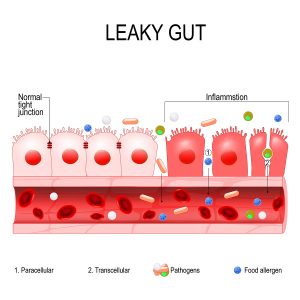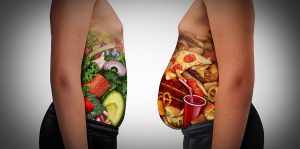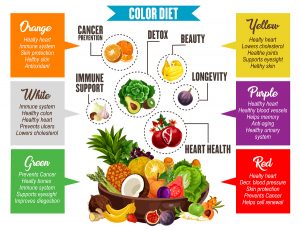Dr. Tom O’Bryan gave a lecture in Las Vegas on Dec. 13, 2019 about celiac disease in various disguises. This was at the 27th Annual World Congress on Anti-Aging Medicine. The title of his talk: “An Ounce of Prevention Is Worth a Pound of Protocols: Halting Our Brains Slow Deterioration”.
Case # 1: 44-year old male with an assumed diagnosis of ALS
In the first place a 44-year old male had a history of a right leg weakness that developed over the last 6 months. He had intermittent spasms in his right quadriceps muscle. In addition, over the last few months he noticed a weakness develop in his right arm with difficulties writing. Significantly, his family history revealed that a maternal aunt had celiac disease. Moreover, a sister had Crohn’s disease and his maternal grandmother had multiple sclerosis. Electromyographic studies showed widespread acute denervation. An MRI scan of the spine showed hyperintensity in the corticospinal tracts. A diagnosis of amyotrophic lateral sclerosis (ALS) followed as a result based on the MRI scan findings.
Further tests
At the same time blood tests revealed that his anti-endomysial antibodies were elevated. Duodenal biopsy demonstrated villous atrophy, crypt-hyperplasia and increased intraepithelial lymphocytes consistent with gluten-sensitive enteropathy (celiac disease). An MRI scan of the brain also showed some hyperintense lesion in the left-brain hemisphere.
Gluten free diet instituted
It was clear with these test results that the initial diagnosis was a misdiagnosis. The real diagnosis was celiac disease. 7 months after the onset of his symptoms he started on a gluten free diet. He received no medications. Notably, his right arm function returned to normal after 9 month of the gluten free diet. Although there was some improvement in his right leg function, he still had some muscle wasting and spasticity in his right leg. However, he could now walk without any aid. His hand-writing was back to normal, and he could button his shirts again. Repeat MRI scans followed 2 months and 9 months after the start of the gluten free diet. At two months after initiation of the gluten free diet the brain lesion in the left brain was somewhat larger than before, but at 9 months it was half the original size.
Case #2: Autism in children, youth depression and Alzheimer’s patients
The autism spectrum disorder (ASD) has significantly increased from 1 in 166 in 2004 to 1 in 40 in 2018. In addition, Dr. O’Bryan also mentioned that in 2017 statistics showed that 13.3% among youth aged 12 to 17 in the US suffered major depressive episodes. 1 in every 12 youth suffer from severe behavioral and emotional problems. According to the CDC since 1994 the number of children on psycho-stimulants increased 5-fold. In the same time children under 18 with bipolar disorder have increased 40-fold. There has been a 6-fold increase of prescriptions for antipsychotic medications for children in the same time frame.
Other effects on adolescents
However, I like to point out that there are other powerful factors that can explain increased depression and emotional problems in adolescence. The Canadian Medical Association published an article about social media and smart phones and the effects they have on adolescence.
On the other end of the life cycle 1 in 3 seniors die with Alzheimer’s disease or dementia. Between 2000 and 2015 death from Alzheimer’s disease has increased by 213%.
Breakdown of the blood brain barrier
According to Dr. O’Bryan autism in children, behavioral and emotional problems in teenagers and dementia from Alzheimer’s disease are all related to the same process, namely a breakdown of the gut barrier, often called leaky gut syndrome. It is important to realize that this leads to a secondary breakdown of the blood brain barrier. The end result is a compromise of the brain, where antibodies attack the brain protein. In young children this causes lower adaptive and cognitive function and behaviors typical for autism. Teenagers are more likely to present with depression or schizophrenia. In older people the breakdown of the blood brain barrier can result in Alzheimer’s disease and other forms of dementia.
25 to 30% of protein in wheat are non-gluten. Antibodies can be directed against gluten, but also against non-gluten protein.
IgG antibodies against gluten cross placenta
In the later stages of pregnancy IgG antibodies cross the placenta easily. They provide passive immunity from various viral infections. Unfortunately, antibodies against gluten also cross through the placenta, which can lead to a breakdown of the fetal gut lining, in the sense of leaky gut syndrome. In this study 211 children were found to have a risk of 1.7-fold to develop psychosis later in life. The mothers were positive for anti-gliadin IgG antibodies in the last 4 weeks of pregnancy. Anti-casein antibodies did not have this psychosis effect (risk only 0.8-fold). The investigators felt that an allergy to wheat in the mother set up general inflammation. Psychosis in the offspring only develops when inflammatory mediators reached the brain of the fetus. It was the brain inflammation, which caused the subsequent psychosis later in the child.
Blood brain barrier and healthy gut barrier
Another key point is that the barrier both in the gut and in the blood brain barrier consists of a single epithelial layer. The cells are held together by zonulin and occludin proteins. Autistic children were exposed already in the uterus to mother’s wheat induced anti-gliadin antibodies. This led to a break-down of the children’s blood brain barrier and the symptoms of the autism spectrum disorder. These children have a lot of brain inflammation and in addition often have impaired gut barrier integrity. It must be remembered that they require a comprehensive program to improve the gut flora, build up the gut barrier integrity and re-establish the blood brain barrier.
Effects of phthalates on young children
A 2014 study measured urinary metabolites of phthalates and related this to the children when they were 7 years old.
The investigators did several cognitive tests and measured the IQ (Wechsler Intelligence Scale). Children of mothers with the highest quartile of phthalates had an IQ, which was on average 7.0 points lower than the control group of the lowest quartile of phthalates. Dr. O’Bryan showed a slide taken from this study.
With this in mind, it points out that a pregnant woman has an intact blood brain barrier, which prevents antibodies from entering. However, the immature brain of the fetus has not developed an efficient blood brain barrier yet. This allows maternal gliadin antibodies from wheat intolerance to enter the fetal brain and cause autism spectrum disorder (ASD).
PCB’s disrupt the blood brain barrier
In mouse experiments the effects of PCB’s were investigated. By the same token, researchers found that the blood brain barrier was broken down by PCB’s that are known to have carcinogenic and neurotoxic properties on the brain. The researchers injected melanoma cells into the animals and found that the PCB pretreated mice sustained brain metastases. However, the control animals that did not have PCB pre-treatment did not develop brain metastases. They concluded from this that PCB’s are breaking down the blood brain barrier.
Maternal brain antibodies causing autism in children
This publication examined antibodies to two different brain proteins. The researchers found that 86% of the children from mothers with two different fetal brain antibodies were diagnosed with autistic regression. According to this publication there are at least 50 different epitopes of gluten peptides that exert cytotoxic, gut permeating and immunomodulatory activities.
DNA microarray technology can now detect many subtypes of food disorders and gluten sensitivities. The tests for celiac disease have a sensitivity of 97% for IgG and 99% for IgA. With regard to specificity the test is now 98% accurate for IgG and 100% for IgA.
Case #3: 34-year old female vegan patient with depression and mild cognitive decline
A 34-year old woman has followed a Vegan lifestyle for 10 years. She has been working long hours and had a lot of stress. In addition, her thyroid was borderline low with high TPO antibodies. A blood test for vitamin D showed vitamin D deficiency. For the past year her energy level was low and she had developed chronic depression. Her physician did a genetic test that found she carried the gene that converts GABA into glutamate. She thinks that she has small intestinal bacterial overgrowth (SIBO). A review of her dietary habits revealed that she ate more cooked foods and less raw food. Her memory is slightly off, her speech not as fluid and she has some cognitive decline.
Her blood tests showed anti-immunity to RAGE peptides. To put it another way, RAGE stands for “receptor for advanced glycation end products”. When you eat too much overcooked foods you ingest advanced glycation end products. This can have adverse effects on your body, particularly the brain.
More tests regarding this woman
Another specific test revealed a blood brain barrier disruption with the presence of anti-brain antibodies. A stool sample was obtained. It showed low Akkermansia, low Faecali bacterium, low Bifido longum and low Bifido adolescentis bacteria. A chemical analysis revealed low butyrate, propionate and acetate. The treating physician concluded that she had a gut dysbiosis and a dysfunctional gut barrier. This has also affected her blood brain barrier. The constellation of symptoms and blood tests explain her clinical condition. She has developed autoantibodies that affect her thyroid gland and her brain because of the antibodies against her RAGE peptides. People can develop Alzheimer’s disease given enough time with exposure to these antibodies. The leaky gut has led to a break-down of her blood brain barrier and exposed her brain to autoimmune antibodies directed against brain cells.
Treatment of gut dysbiosis
This patient started a gluten free diet (GFD). But one of the problems of the GFD is that wheat is removed that normally provides 69% inulin and 71% oligofructose, both important prebiotics that are necessary for probiotics to work with. Inulin is contained in beets, leeks, asparagus, onions, garlic and bananas. Oligofructose is contained in chicory root, bananas, onion, and garlic.
When people consume a typical Western diet, they get between 1 and 4 grams of inulin daily. But others who eat balanced diets get up to 25 to 100 grams of inulin per day. Dr. O’Bryan explained that going on a GFD leads to an altered microbiome.
Experiment with volunteers to measure the effects of a gluten free diet
He discussed an experiment on 10 healthy volunteers who were fed a GFD for 1 month.
The researchers ordere stool samples in the beginning and at the end of the experiment. There was less of the good bacteria and more of the the bad bacteria. This led to a less protective and more inflammatory environment. The remedy for that is to eat 1 root vegetable and 2 other prebiotics per day. The patient on a GFD must supplement with prebiotic-rich foods to prevent this from happening.
Non-digestible oligosaccharide supplement
Inulin and oligosaccharides support the intestinal microbiota. Dr. O’Brien suggested to add a supplement, called Precision Prebiotic™, non-digestible oligosaccharides that can increase microbial diversity. This supplement supports the growth of the healthy bacteria. These are keystone bacteria like Akkermansia muciniphila, Faecal bacterium prausnitzii, and Bifidobacteria.
Other supportive measures for the gut
- 1 tablespoon of fermented vegetables like sauerkraut once per day
- The ingestion of fermented foods increases the beneficial gut bacteria by a factor of 10,000-fold!
- A 100% spore-based probiotic supplement increases diversity of the gut flora and helps to maintain the gut barrier
- Sodium butyrate, which comes from fermented food is an important modulator of the central nervous system
- In addition, sodium butyrate also inhibits pathological gut bacteria and maintains the gastrointestinal balance
- In neurodegenerative disorders sodium butyrate provides anti-inflammatory and neuroprotective effects
- Sodium butyrate restores the blood brain barrier
- Following heart attacks or strokes sodium butyrate promotes tissue repair and recovery through cell survival
Conclusion
Dr. Tom O’Bryan delivered a lecture at the 27th Annual World Congress on Anti-Aging Medicine in Las Vegas on Dec.13, 2019. Wheat allergies have increased in the last decades. Researchers have found that in many people there is a deterioration of the gut flora and a breakdown of the gut barrier. This leads to antibody formation against gluten or gliadin (wheat proteins). This exposes the body to many proteins from the gut. The body reacts by producing antibodies to them. These are also affecting cells in the body as they cross react with body proteins. The inflammation from the autoantibodies cause the blood brain barrier to break down. Now the immune system can produce antibodies against brain tissue. In the past with an intact blood brain barrier this was not possible.
Autoantibodies in various life epochs
At a young age autism can develop because of antibodies against gliadin from wheat. In our youth schizophrenia and depression can occur from gut dysbiosis and a subsequent break down of our blood brain barrier. In old age Alzheimer’s disease develops in 1 out of 3 people due to gut dysbiosis and a breakdown of the blood brain barrier with anti-brain antibodies. Dr. O’Bryan explained how a person can turn this negative spiral around and start a new life without these problems. You can avoid a lot of these diseases by eliminating wheat and processed food from your diet.















